Let me get back to my sandpaper plate again, and introduce you to my special marking pencil:
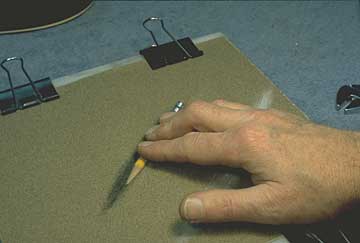
This is a very simple little tool I keep around for marking nut height. I give it a few strokes against the sandpaper plate to clean and sharpen it.
Notice the pencil isn't really sanded halfway through, except at the point:
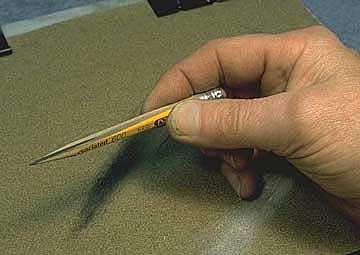
The point is rather fragile, but being flat on one side, it gives me an incredibly sharp marking line right against any surface.
Here, I'm using the half pencil, holding it against the tops of the frets to mark the projected line of the fret tops against the nut blank as I hold it in place:
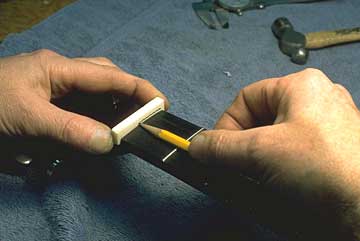
The idea is to establish a minimum height line. The lowest string position in a nut is logically the same height as a fret, so I think of the top of my pencil line as a preliminary bottom line for string notches in the nut. That way I have the thickness of the pencil line as a "safety margin."
Here's my nut blank with the perimeter marked all around:

I like to use my little 1"x42" stationery belt sander to rough out the blank:

I'll sand about halfway through the pencil lines around the ends, but I'll leave extra material above my height line:
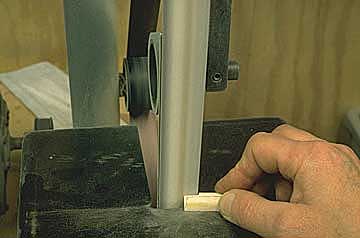
If the sander isn't available, a coarse double cut file works well as a roughing tool:
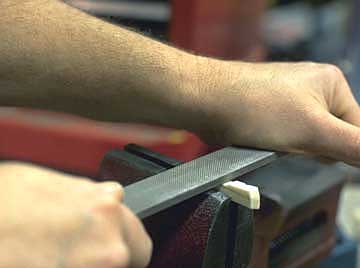
I have the ends trimmed, and sanded with 280 grit to fit precisely, but I've left the profile very rough, angular and oversize:
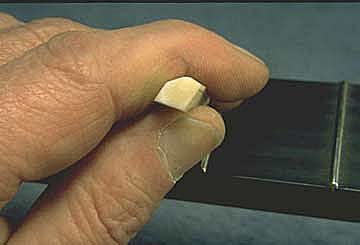
With the nut lightly glued in place, I'll mark the string positions on the top front edge:
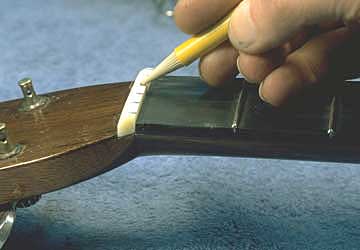
I'll copy the original string spacing using the old nut, unless there's a reason to make a change.
Some players like the strings closer or farther from the edge, or the old nut may have had uneven spacing. In either case, I'll determine the location of the two outside strings, and then fill in the other four, spacing them evenly across the nut. Generally, you can't feel tiny differences in spacing when you play, but if you see that the spacing is uneven, you'll tend to focus on that, and then you will have some difficulty fretting. I try to space the strings so that there is an equal amount of distance between them, rather than space the centers of the strings at equal distances. This is a small point, and mostly a matter of cosmetics, in my opinion.
Click here to see a terrific little tool for laying out nut slot spacing!
More